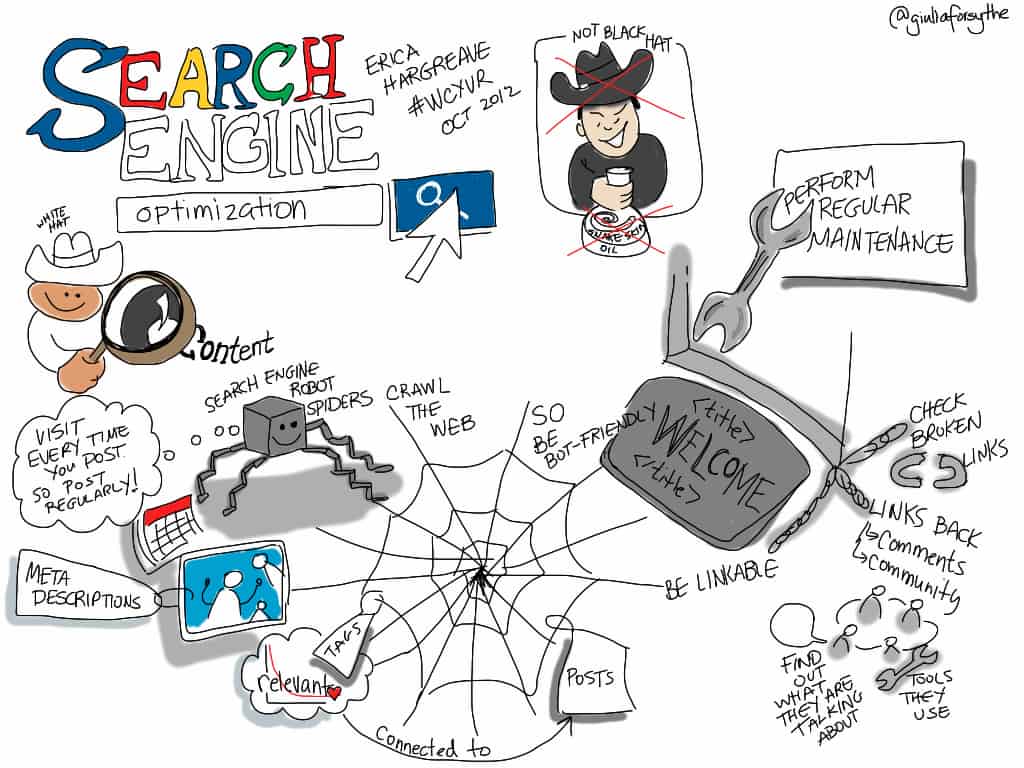Search Engine Optimization is a series of steps that one takes on the website or off the website and some technical tweaking for it to rank organically on search engine result pages commonly called as SERP . In this comprehensive guide, we will explore the fundamentals of SEO, different types of SEO techniques, how to implement effective SEO strategies, and the distinction between legitimate and illegitimate SEO practices. By the end of this article, you will have a solid understanding of SEO and be equipped with the knowledge to optimize your website for search engines.

1. Understanding Search Engine Optimization (SEO)
Steps on website ( on-page seo ) , ( off-website ) and some other technical techniques to rank higher on organic Search Engine Result Pages ( SERP ) is called Search Engine Optimization. By optimizing various elements of a website, including its content, structure, and backlinks, SEO helps search engines understand the relevance and quality of a website’s content, leading to higher rankings and more organic traffic.
SEO is crucial for businesses and website owners as it helps drive targeted traffic, increases brand visibility, and improves overall user experience. It involves both on-page and off-page optimization techniques, as well as technical optimizations to ensure a website is easily accessible and indexable by search engines.
How SEO Works
Search engine optimization, or SEO, is the meticulous art of making your website a magnet for search engines. Imagine tiny AI spiders crawling the web, sniffing out relevant content and ranking it based on a complex set of signals. Think keyword magic: weaving the words people search for into your website’s content, structure, and even behind-the-scenes code. The better you understand and cater to these digital detectives, the higher your website climbs in the search results, boosting visibility and attracting more hungry clicks. But remember, it’s not just about keyword stuffing; it’s about creating valuable, user-friendly content that truly deserves a top spot. So, optimize wisely, and watch your website rise to the top of the digital jungle!
2. Different Types of SEO
There are several types of SEO techniques that website owners can employ to improve their search rankings. SEO can broadly be classified into the following categories :
a) White Hat SEO
White Hat SEO refers to genuine and ethical optimization approaches that adhere to search engine rules. It focuses on creating high-quality content, optimizing meta tags, building natural backlinks, and improving user experience. White Hat SEO techniques provide long-term results and maintain the integrity of a website.
b) Black Hat SEO
Black Hat SEO encompasses unethical practices that aim to manipulate search engine algorithms to achieve higher rankings quickly. These techniques often violate search engine guidelines and can result in severe penalties or even permanent bans from search engine results. Examples of Black Hat SEO include keyword stuffing, hidden text, cloaking, and link farming.
c) Gray Hat SEO
Gray Hat SEO falls somewhere between White Hat and Black Hat techniques. It involves using strategies that may not strictly comply with search engine guidelines but do not explicitly violate them either. While some Gray Hat techniques may deliver short-term gains, they carry risks and should be approached with caution.
d) Negative SEO
Negative SEO involves malicious attempts to harm a competitor’s website rankings by utilizing unethical tactics such as creating spammy backlinks or duplicating content. It is essential for website owners to monitor their backlink profiles regularly to identify and disavow any toxic or harmful links.
3. On-Page SEO Optimization
On-Page SEO refers to optimizing various elements within a web page to improve its visibility on search engine results pages. Here are some key on-page optimization techniques:
a) Keyword Research and Optimization
Keyword research is the core of any Seo strategy. It involves identifying relevant keywords and phrases that users are searching for in relation to your business or industry. By strategically incorporating these keywords into your content, meta tags, headings, and URLs, you can improve your website’s visibility for those specific queries.
b) High-Quality Content Creation
Creating high-quality and engaging content that provides value to the users is appreciated by the search engines. Your content should be informative, well-written, and relevant to your target audience. Incorporate your target keywords naturally within your content while ensuring it flows naturally and provides value to readers.
c) Meta Tags Optimization
Meta tags, including the title tag and meta description, provide concise summaries of your web page’s content in search engine results. Optimizing these tags by including relevant keywords and compelling descriptions can significantly impact click-through rates from SERPs.
d) URL Structure
Optimize your website’s URLs by keeping them short, descriptive, and keyword-rich. A clean URL structure makes it easier for search engines to understand the context of your web pages and improves user experience.
e) Internal Linking
Internal linking involves linking relevant pages within your website to provide additional information to users and help search engines navigate your site effectively. Proper internal linking can improve site architecture, distribute link equity, and enhance user experience.
4. Off-Page SEO Optimization
Off-Page SEO focuses on activities conducted outside your website to improve its visibility and authority in search engine rankings. Here are some effective off-page optimization techniques:
a) Link Building
Link building is the process of acquiring high-quality backlinks from other authoritative websites to your own site. Quality backlinks are crucial for improving search engine rankings as they signal to search engines that your website is reputable and worthy of citation. Some ethical link building strategies include guest blogging, influencer outreach, and creating shareable content.
b) Social Media Marketing
Leveraging popular social media platforms can help increase brand visibility, engage with your target audience, and generate social signals that indirectly impact search engine rankings. Sharing valuable content, engaging with followers, and participating in relevant discussions can all contribute to off-page SEO success
c) Online Reputation Management (ORM)
Managing your online reputation is vital for building trust with both users and search engines. Monitor online reviews, address customer feedback promptly, and leverage positive testimonials to enhance your brand’s reputation. A strong online reputation can positively impact click-through rates from SERPs.
d) Brand Mentions
Monitoring brand mentions across the web allows you to identify opportunities for collaboration or link building. Engage with individuals or websites mentioning your brand or products to foster relationships and potentially earn valuable backlinks.
5. Technical SEO Optimization
Technical SEO focuses on improving the technical aspects of a website to ensure optimal crawling, indexing, and accessibility by search engines. some important technical optimization techniques are:
a) Site Speed Optimization
How fast a page shows up on the viewer’s screen is website speed and because it is an important part of the overall user experience , search engine ranking depends a great deal on the website speed.. Optimize your website’s performance by compressing images, minifying CSS and JavaScript files, leveraging caching mechanisms, and using content delivery networks (CDNs).
b) Mobile-Friendly Design (Responsive Design)
With mobile devices accounting for a significant portion of internet traffic, having a mobile-friendly website is essential for both usability and search engine rankings. It is important to execute Mobile- friendly principles (responsive design principles ) to make sure that your website appears well on different screens like mobile phone, laptop etc.
c) XML Sitemaps
XML sitemaps help search engines understand the structure of your website by providing a list of all pages you want to be indexed. Regularly update and submit your XML sitemap to search engines to ensure efficient crawling and indexing.
d) Robots.txt File
The robots.txt file instructs search engine crawlers which pages or sections of your site should be crawled or excluded from indexing. Properly configure the robots.txt file to control how search engines access and interpret your website’s content.
6. Local SEO Strategies
Local SEO aims to make sure that your website appears in the searches that are location specific. Whether you have a physical store or operate within specific regions, implementing local SEO strategies can help drive targeted traffic to your business. Here are some key tactics:
a) Google My Business (GMB)
Create and optimize your Google My Business listing to appear in local search results and on Google Maps. Ensure accurate information such as address, phone number, business hours, and customer reviews are provided.
b) Local Citations
Consistent NAP (Name, Address, Phone Number) information across online directories is crucial for local SEO. Register your business with reputable directories such as Yelp, Yellow Pages, and industry-specific directories.
c) Online Reviews
Encourage customers to leave reviews on platforms such as Google Maps or Yelp. Positive reviews not only boost credibility but also impact local search rankings.
d) Localized Content
Tailor your website’s content to include location-specific keywords and phrases that resonate with your target audience in specific regions.
7. E-commerce SEO Best Practices
E-commerce websites require unique SEO strategies due to the nature of their product catalogs and online shopping functionalities. Here are some best practices for optimizing e-commerce websites:
a) Product Descriptions
Craft unique and compelling product descriptions that provide valuable information while incorporating relevant keywords naturally. Avoid duplicate content issues by ensuring each product has a distinct description.
b) Image Optimization
Optimize product images by compressing file sizes without sacrificing quality. Its important that you use alt tags for images so that search engines can understand them well and show them in their correct context.
c) User-Generated Content
Leverage user-generated content such as product reviews or testimonials to enhance credibility and provide unique content that search engines value.
d) Schema Markup
Implement schema markup for products to enhance their visibility in SERPs by displaying additional information such as price range, reviews, availability, or ratings directly in the search results.
8. Black Hat SEO Techniques to Avoid
While it’s essential to understand different types of SEO techniques, it’s equally important to be aware of black hat practices that can harm your website’s rankings and reputation. Some black hat techniques you should avoid are :
• Keyword stuffing: Excessively using keywords in an unnatural manner within content.
• Cloaking: Showing different content to users than what is presented to search engines.
• Paid links: Buying or exchanging links solely for the purpose of ranking manipulation.
• Hidden text: Including hidden text or links on web pages visible only to search engines.
• Duplicate content: Copying or plagiarizing content from other websites without permission.
In conclusion, implementing effective SEO strategies requires a combination of technical expertise, quality content creation, ethical link building practices, and ongoing optimization efforts. By understanding the different types of SEO techniques discussed in this guide and following best practices while avoiding black hat tactics, you can optimize your website for higher visibility in search engine results pages (SERPs), drive targeted organic traffic, and ultimately achieve online success.
9. Frequently Asked Questions (FAQs)
Q1: How long should I wait for SEO efforts to show results?
A1: The timeline for seeing noticeable results from SEO efforts can vary depending on various factors such as competition levels, industry niche, previous optimization efforts, and the quality of the implemented strategies. Generally, it takes several months before significant improvements in organic rankings can be observed.
Q2: Should I hire an expert to do Seo for me or should I do it myself?
A2: While basic SEO practices can be implemented by individuals with some technical knowledge, hiring an experienced SEO professional or agency can provide valuable expertise, save time, and ensure comprehensive optimization strategies are implemented.
Q3: Is link building still important for SEO?
A3: Yes, link building remains an essential aspect of off-page SEO. High-quality backlinks from authoritative websites contribute significantly to improving search engine rankings and increasing organic traffic.
Q4: Are social media signals important for SEO?
A4: While social media signals may indirectly impact search engine rankings, their influence is not as direct as other factors like backlinks or on-page optimizations. However, social media platforms can drive traffic to your website and increase brand visibility.
Q5: What is the difference between organic traffic and paid traffic?
A5: Organic traffic refers to visitors who find your website through non-paid search engine results. Paid traffic refers to visitors who arrive at your site through paid advertising campaigns such as Google Ads or social media ads.
Reference : http://www.wikipedia.com







